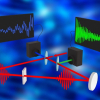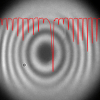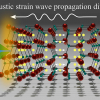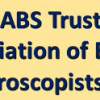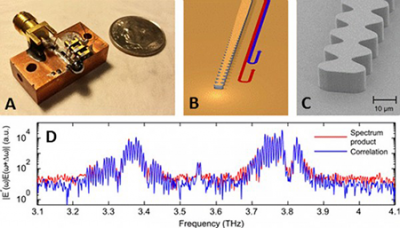
Researchers at the Massachusetts Institute of Technology and Sandia National Laboratories have fabricated high-performance quantum cascade lasers (QCLs) and integrated them into a device to demonstrate new, high-power broadband terahertz frequency combs. By cancelling out intracavity wavelength dispersion (through corrugated etching of the laser), a robust comb can be formed since long-wavelength waves travel to the end of the cavity before reflecting back, while short-wavelength waves reflect back earlier (B in the figure). This produces frequency combs covering a frequency range of almost 500 GHz with more than 70 lines at 3.5 THz. The comb’s frequency bandwidth covers 14% of its centre frequency. This is the highest fractional bandwidth of integrated semiconductor frequency combs to date, suggesting that similar techniques can be used to improve frequency combs at wavelengths other than terahertz, such as the mid-infrared. A derivative of Fourier -transform spectroscopy, shifted wave interference Fourier-transform (SWIFT) spectroscopy, was used to quantitatively measure the performance of the lasers frequency combs and to measure the effectiveness of comb formation. By utilising intracavity mixing, these lasers can compactly measure the frequency of single-mode lasers without the need for a high-speed terahertz detector or an external solid-state laser.
Their work is reported in Nature Photonics.


